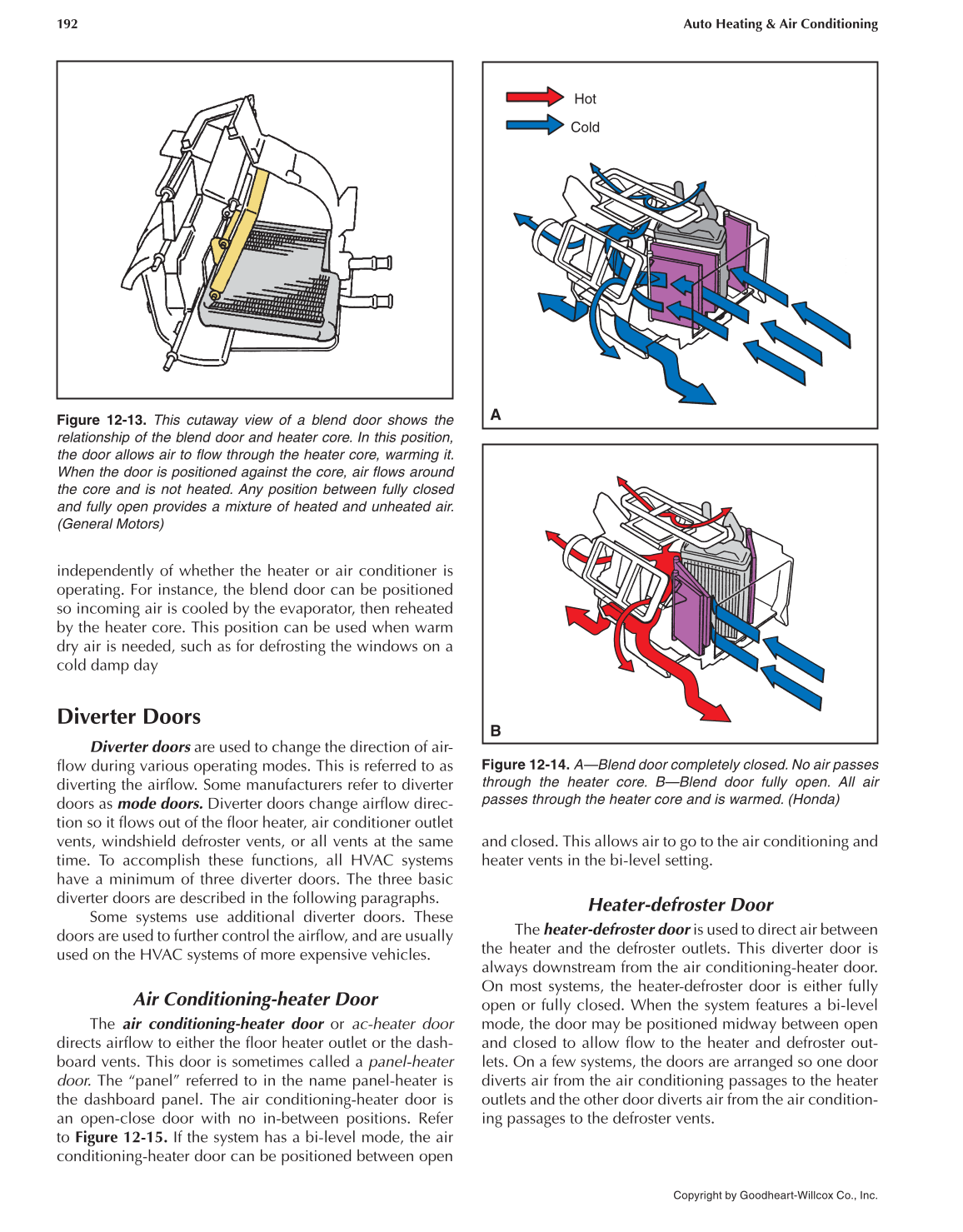192 Auto Heating & Air Conditioning
Copyright by Goodheart-Willcox Co., Inc.
independently of whether the heater or air conditioner is
operating. For instance, the blend door can be positioned
so incoming air is cooled by the evaporator, then reheated
by the heater core. This position can be used when warm
dry air is needed, such as for defrosting the windows on a
cold damp day
Diverter Doors
Diverter doors are used to change the direction of air-
fl ow during various operating modes. This is referred to as
diverting the airfl ow. Some manufacturers refer to diverter
doors as mode doors. Diverter doors change airfl ow direc-
tion so it fl ows out of the fl oor heater, air conditioner outlet
vents, windshield defroster vents, or all vents at the same
time. To accomplish these functions, all HVAC systems
have a minimum of three diverter doors. The three basic
diverter doors are described in the following paragraphs.
Some systems use additional diverter doors. These
doors are used to further control the airfl ow, and are usually
used on the HVAC systems of more expensive vehicles.
Air Conditioning-heater Door
The air conditioning-heater door or ac-heater door
directs airfl ow to either the fl oor heater outlet or the dash-
board vents. This door is sometimes called a panel-heater
door. The “panel” referred to in the name panel-heater is
the dashboard panel. The air conditioning-heater door is
an open-close door with no in-between positions. Refer
to Figure 12-15. If the system has a bi-level mode, the air
conditioning-heater door can be positioned between open
and closed. This allows air to go to the air conditioning and
heater vents in the bi-level setting.
Heater-defroster Door
The heater-defroster door is used to direct air between
the heater and the defroster outlets. This diverter door is
always downstream from the air conditioning-heater door.
On most systems, the heater-defroster door is either fully
open or fully closed. When the system features a bi-level
mode, the door may be positioned midway between open
and closed to allow fl ow to the heater and defroster out-
lets. On a few systems, the doors are arranged so one door
diverts air from the air conditioning passages to the heater
outlets and the other door diverts air from the air condition-
ing passages to the defroster vents.
Figure 12-13. This cutaway view of a blend door shows the
relationship of the blend door and heater core. In this position,
the door allows air to fl ow through the heater core, warming it.
When the door is positioned against the core, air fl ows around
the core and is not heated. Any position between fully closed
and fully open provides a mixture of heated and unheated air.
(General Motors)
Hot
Cold
A
Figure 12-14. A—Blend door completely closed. No air passes
through the heater core. B—Blend door fully open. All air
passes through the heater core and is warmed. (Honda)
B
